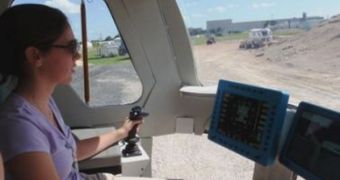Every single year, the American space agency is hosting the Desert Research and Technology Studies group (Desert RATS) initiative, which is meant to promote the development of state-of-the-art technologies and concepts.
The challenge lasts for two weeks, and is this year taking place at the Black Point Lava Flow site, near Flagstaff, in the Arizona desert. The main goal is to improve future human and robotic exploration.
Numerous teams participate in the challenge, including some from various NASA research centers and testing facilities, as well as some from private companies and academic partners.
This year's endeavor kicked off on August 30, and many of the teams participating in the challenge have connections with the School of Earth and Space Exploration at the Arizona State University.
“Explorers are eager to trek across the surface of the Moon or Mars, but our planet offers several sites that mimic otherworldly landscapes - minus the hefty price tag and the long travel time,” explains expert Kip Hodges.
He is a science team leader of the Desert RATS project, as well as the founding director of the School of Earth and Space Exploration.
The School is based at the ASU College of Liberal Arts and Sciences. “We’re fortunate to have an analog site nearby, not only for our students but also for the expanding aerospace industry in Arizona,” he explains further.
The site at Black Point Lava Flow has been identified as appropriate for this type of studies ever since the Apollo program, decades ago. Conditions here are very similar to those from the Moon.
“The School of Earth and Space Exploration continues to play a pivotal role in this exciting era of exploration as evidenced by the involvement of many past and present members of the SESE community in the Desert RATS test,” Hodges adds.
One of the main objectives of this year's campaign is to test two rovers. This will be done by leaving the crew to fend for themselves, just like they would have to do if something went wrong while exploring the Moon or Mars.
Emergency response crews are instructed not to interfere except if a life-threatening situation develops.
The data collected in this manner will be used when teams design and construct the actual exploration instruments that will leave our planet, and head for other locations in the solar system.
“While we may not go back to the Moon or travel to Mars by 2020, humans will visit other planetary bodies and, when that happens, tests like Desert RATS will be crucial in providing the technology and mission ops procedures to get us there,” says ASU PhD student Kelsey Young.
“This test is a great example of a field exercise that combines science, communications, robotics, and mission operational procedures. Tests like this one not only cross disciplines, but they bridge people in the space exploration and geology communities from all across the country,” she adds.

 14 DAY TRIAL //
14 DAY TRIAL //